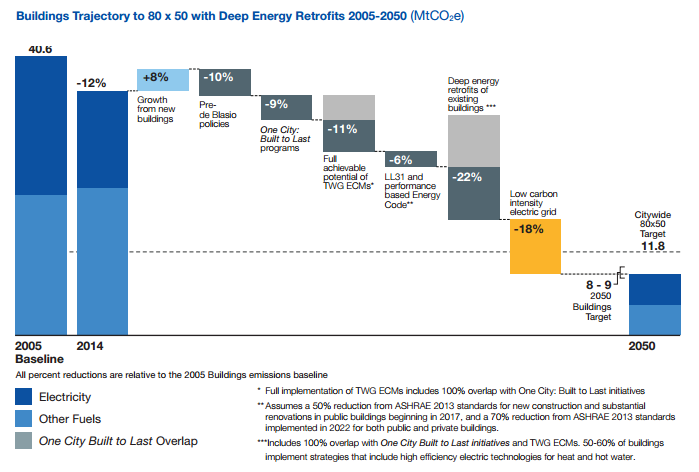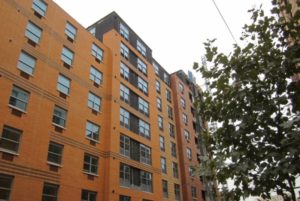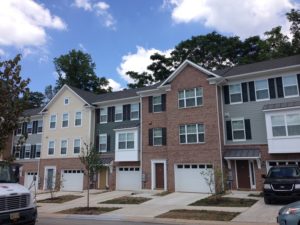New York City has established high goals for CO2 reductions as part of the 80 x 50 plan enacted under Mayor de Blasio’s administration. In short, NYC aims to reduce its CO2 production by at least 80% by 2050 (from a 2005 baseline). This requires vast energy conservation and renewable energy production proliferation across the city’s energy, transportation, waste management, and building sectors. Buildings themselves account for 68% of current CO2 production in the City, and as such have the largest reduction targets1. Goals can only be met by implementing repeatable and scalable scopes of work in coordination with policy updates and improvements in other energy sectors. To better understand the efficacy of these moderate improvements on overall energy consumption, we’ve analyzed the results from a recent portfolio rehabilitation. These findings help us to create a map of where we need to go in order to approach 80 X 50.
2016 New York Energy Codes: Commercial Edition
It has now officially been over one month since the 2016 NYS energy code went into effect. In a recent blog post, we covered some of the significant changes for residential buildings in New York. In this post, we will explore the substantive changes made in the commercial code section, particularly with respect to envelope and air barrier requirements.
As a reminder, in this post, we are referring to retail, commercial, or larger than three-story R-2, R-3, or R-4 buildings. New York buildings can choose between one of two compliance pathways: ASHRAE 90.1 2013 or IECC 2015, by applying the appropriate state and city amendments. Prescriptive as well as performance options are available, depending on the chosen pathway. (more…)
2016 New York Energy Codes: Residential Section
A week has passed since the new energy code went into effect in New York State and New York City. Did you miss it? Hopefully not, but we thought it might be helpful to review some of the new requirements in the residential section (stay tuned for future posts on the commercial section).
In case you need a refresher on what constitutes a residential building, we’re talking about “detached one- and two-family dwellings and multiple single-family dwellings (townhouses) as well as Group R-2, R-3 and R-4 buildings three stories or less in height above grade plane.” Here are the documents you’ll need:
1. 2015 International Energy Conservation Code (IECC)
2. 2016 Supplement to the New York State Energy Conservation Construction Code (NYSECC)
3.2016 New York City Energy Conservation Construction Code (NYCECC)
New York City did us a favor and put everything into one document, but we weren’t so lucky with the state code – you’ll have to cross reference the supplement with IECC (links 1 and 2 above). All of the residential codes are now denoted with an “R” prefix (as compared to “C” for commercial).



